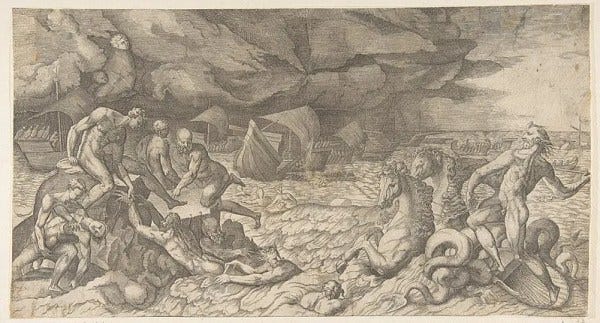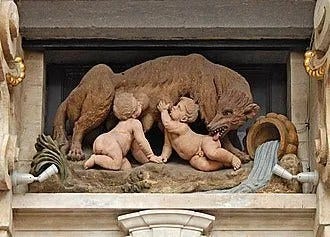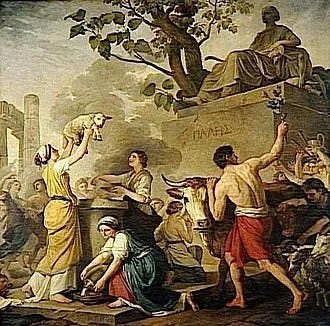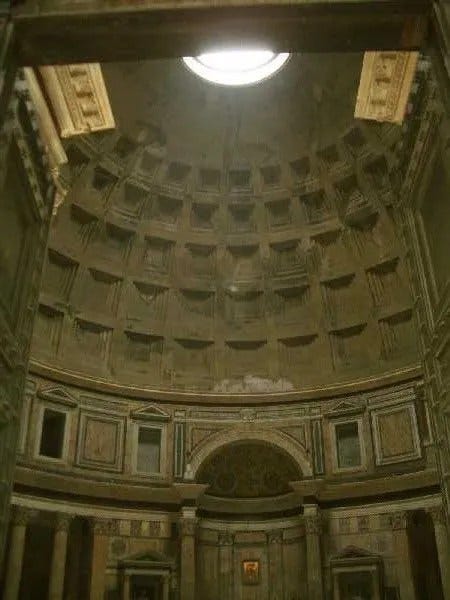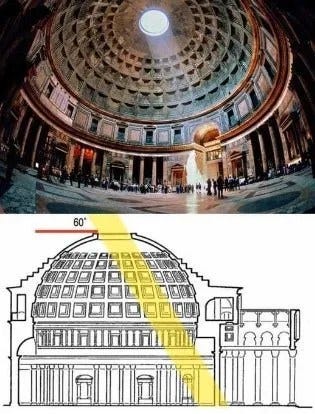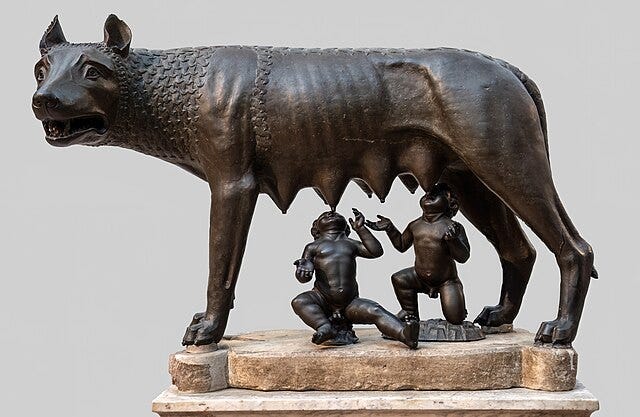
Rome was founded on April 21, 753 B.C., according to the Roman antiquarian Titus Pomponius Atticus.
The City’s origins are shrouded in legends and myths. One founding myth is about Aeneas, a Trojan War hero, and his descendants, who are believed to have played a role in the City’s founding.
Another more popular legend deals with twin brothers and a kidnapping.
Who were the key players, when did the City begin, what was the evolution of Rome, and what happens on April 21?
The Myth of Aeneas
Greco-Roman mythology recounts the story of Aeneas, the son of the Trojan prince Anchises, and the Greek goddess Aphrodite (Roman: Venus). Though a cousin to Priam, King of Troy, he played a minor role in the Trojan War, as told in Homer‘s Iliad.
Once this story moved to the Roman world, it got the complete treatment in Virgil‘s epic poem, the Aeneid, written between 29 and 19 B.C. Aeneas was one of the few Trojans to survive the War and gathered other survivors to travel toward Italy. He received a prophecy that in Italy, he would give rise to a noble and courageous race. They would not only prosper but eventually rule the entire known world.
Aided by several gods, they eventually arrived at Latium, a Greek colony since the 6th century B.C., where they were greeted by Latinus, king of the Latins. He betrothed his daughter Lavinia to Aeneas. Our hero founded the City of Lavinium in honor of his wife. It is the port City, just 6 km from Rome.
He had many other adventures, but this is the short version.
The Legend of Romulus and Remus
However, most people are familiar with the story of the twin brothers Romulus and Remus. They were born to Rhea Silvia, a Vestal Virgin, and some versions also say the father was the god Mars or the demigod hero Hercules. She was the daughter of the former king Numitor, who was displaced by his brother Amulius. King Amulus ordered them killed, but his servants abandoned them on the bank of the River Tiber in what is now modern-day Rome.
The twins were suckled by the she-wolf in a cave, the Lupercal, at the Palatine Hill. Faustulus, a shepherd, raised the boys, unaware of their parentage. Remus was kidnapped and appeared before the king and the king’s father, the boys’ grandfather; they suspected the boy’s identity. Romulus gathered supporters to liberate his brother and, with the help of their grandfather, restored the throne to Numitor. The twins then set out to build a city of their own.
Returning to the area of the seven hills, they argued about which hill to build upon, and they each began on a different hill. Remus insulted Romulus’ new City and was killed by Romulus or one of his henchmen.
Romulus went on to found the City of Rome, named after himself.
The Celebration on April 21
During the Late Republic of Rome, to honor Pales, the Roman deity of shepherds, the Parilia Festival was held on April 21 to commemorate the anniversary of the City’s founding in 753 B.C. During that period of Roman history, it was called dies natalis Romae, the “birthday of Rome.”
Roman historians set events from that initial date so that Jesus was born approximately 753 AUC or Ab Urbe Condita “from the founding of the City.”
The Ages of Rome’s History
The ages of Rome can be divided into four parts:
The Kingdom (c. 753 BC — 509 BC): From its founding by Romulus to the overthrow of the last king, Tarquin the Proud, this led to the establishment of the Roman Republic.
The Roman Republic (c. 509 BC — 27 B.C.): Rome became a republic after the expulsion of the last king, with elected officials representing the people (Senate and Republic of Rome, SPQR) with a complex system of checks and balances. Rome became a major power in the Mediterranean.
The Roman Empire (27 B.C. — AD 476 / 1453): Beginning with the rule of the Julio-Claudian dynasty, it included Augustus, Tiberius, Caligula, Claudius, and Nero. Rome achieved its most expansive geographical territory. Successive emperors endeavored to hold the Empire together, though it split into West and East. The Western Empire fell to barbarian tribes on September 4, A.D. 476. You can read about it here.
Byzantine Empire (c. AD 330–1453): The Eastern Roman Empire, with its capital in Constantinople (modern-day Istanbul), continued after the fall of the Western Roman Empire. It was a continuation of the Roman Empire, with Greek as its primary language and Eastern Orthodox Christianity as its main religion.
Astronomical Coincidence?
In the City of Rome today, the Pantheon, “[temple] of all the gods,” has the world’s largest unreinforced coffered concrete dome. The building has been used for over 1900 years, and its dome is one meter larger than the dome atop St. Peter’s Basilica in the Vatican.
Presumably, it was initially used for the cult of the Greco-Roman gods, with an oculus, a 9-meter diameter hole in the ceiling to allow the escape of smoke from sacrifices. Since the early 7th century, it has been a church, Basilica Santa Maria ad Martyres or Basilica of St. Mary and the Martyrs. But everyone calls it the Pantheon.
Every year, on April 21st at noon, the sun’s rays pass through the oculus, illuminating the main gate to the vestibule of the building.
Happy 2778th birthday, Rome!
Bill Petro, your friendly neighborhood historian
billpetro.com
Subscribe to have future articles delivered to your email. If you enjoyed this article, please consider leaving a comment.




